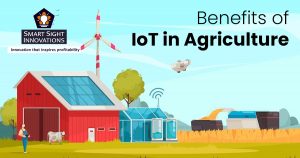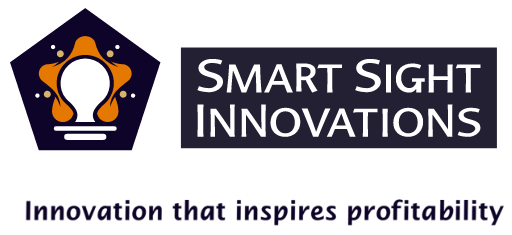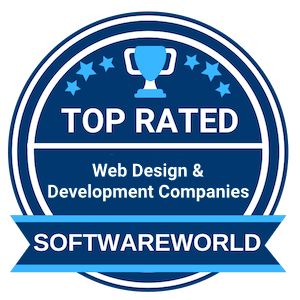 IoT or the internet of things is a technology that allows devices to connect and exchange data with each other. IoT can contribute immensely to several industries, and one of the most important areas where IoT can contribute is agriculture.
IoT or the internet of things is a technology that allows devices to connect and exchange data with each other. IoT can contribute immensely to several industries, and one of the most important areas where IoT can contribute is agriculture.
IoT can help monitor and control various aspects of farming like crop health, water management, and livestock. IoT can also help farmers make better decisions by providing real-time data about their farms. In this article, we look at some of the vital areas where IoT can improve farming operations.
Improving Crop Yields With IoT
IoT can help farmers improve their crop yields by providing them with real-time data and insights. With the help of sensors and other IoT devices, farmers can monitor various factors that affect crop growth, such as soil moisture, temperature, and light intensity.
This information can help farmers make better decisions regarding fertilization efforts, or harvesting their crops, which can lead to higher yields. IoT devices can be used to monitor soil moisture levels in real time, which can help farmers determine when to water their crops.
This can help them avoid over or under-watering, which can be detrimental to crop growth. Similarly, IoT devices can help farmers monitor the amount of sunlight their crops receive, which can help them determine the best times to plant, irrigate, fertilize, and harvest their crops. By optimizing these factors, farmers can maximize their crop yields and reduce waste.
Efficient Water Management with IoT
Water is a scarce resource and efficient water management is crucial for sustainable farming practices. IoT can help farmers manage their water resources more efficiently by providing them with accurate time data on soil moisture levels, weather conditions, and water usage.
IoT sensors can be used to monitor soil moisture levels and weather conditions, which can help farmers determine how much water to use.
Additionally, IoT devices can help farmers monitor their water usage and identify areas where they can reduce water consumption. IoT can help farmers manage water resources effectively by using sensors to measure soil moisture and weather data to predict rainfall. With this information, farmers can optimize irrigation schedules and reduce water usage, leading to lower costs and a more sustainable use of water resources.
Precision Farming with IoT Technology
Precision farming is an approach to farming that uses technology to optimize crop yields and reduce waste. IoT can help farmers implement precision farming practices by providing them with live data and insights about their crops.
IoT devices can be used to monitor soil conditions, such as pH levels and nutrient levels. This information can help farmers determine when to fertilize their crops and which fertilizers to use.
Additionally, IoT devices can be used to monitor weather conditions and predict when pests or diseases are likely to occur. This information can help farmers take preventive measures to protect their crops.
IoT devices can also provide data on soil, water, and crop integrity, which can be used to create digital maps of the farm, enabling farmers to manage their crops at a micro-level. Precision farming has many benefits, including reduced waste, improved yields, and increased profits.
Reduced Labor Costs with IoT
One of the major benefits of IoT in agriculture is the ability to reduce labor costs. Farming is a labor-intensive industry, and reducing labor costs can help farmers save money and increase profits.
An effective combination of IoT software development and advanced IoT devices can automate many of the tasks that would otherwise require manual labor, freeing up farmers to focus on more important tasks. One example of how IoT can reduce labor costs is through the use of automated irrigation systems.
Traditional irrigation systems require manual labor to turn on and off, which can be time-consuming and labor-intensive. With IoT sensors, farmers can automate the irrigation process, allowing the system to turn on and off based on soil moisture levels.
This not only saves time and labor costs but also ensures that crops receive the right amount of water, leading to better yields and more efficient use of water resources. Another example of how IoT can reduce labor costs is through the use of autonomous vehicles.
IoT-enabled tractors and other farming equipment can be programmed to perform tasks such as planting, fertilizing, and harvesting, without the need for human intervention. This reduces the need for manual labor, saves time, and can increase efficiency.
Additionally, autonomous vehicles can operate around the clock, allowing farmers to complete tasks more quickly and efficiently than with traditional farming methods. IoT also has the potential to reduce labor costs by automating other farming tasks like fertilization and pest control.
This can be achieved by using sensors and drones that can be programmed to perform specific tasks. With reduced labor costs, farmers can allocate their resources more efficiently and focus on other critical aspects of their operations.
Predictive Analytics for Optimal Harvesting
Predictive analytics involves using data and algorithms to make predictions about future events. In agriculture, predictive analytics can be used to determine the optimal time to harvest crops.
By analyzing data on factors like weather, soil moisture, and crop health, farmers can predict when the crop will reach its peak yield. This information can be used to plan harvesting schedules and optimize crop yields.
Enhancing Livestock Monitoring with IoT
Livestock monitoring is an essential aspect of animal husbandry. IoT can be used to monitor livestock by using sensors that track factors like body temperature, heart rate, and movement.
This data can be analyzed to detect signs of illness or stress in the animals. With real-time monitoring, farmers can take action quickly to prevent the spread of diseases and ensure the well-being of their animals.
Sustainable Farming with IoT
Sustainability is another critical issue when it comes to agricultural practices, and IoT has a major role to play here as well.
Farming is one of the most essential professions all over the world as it feeds the entire human population. The sheer size of the industry means that if even a small portion of farmers worldwide follow best practices, it can make a huge difference to sustainability efforts.
This is all the more reason for more farmers to be educated about the best practices to reduce waste and farm more sustainably. Data from IoT sensors can help optimize water usage, reduce waste, and improve crop yields, thus helping farmers to reduce their environmental impact. IoT can also be used to promote sustainable farming practices like crop rotation and integrated pest management.
IoT-powered Supply Chain Management in Agriculture
Supply chain management is a critical aspect of agriculture, and IoT can help farmers manage their supply chains more efficiently. IoT can be used to track products from farm to market, enabling farmers to monitor product quality and ensure compliance with regulations.
IoT can also be used to optimize logistics and reduce waste in the supply chain. This results in a more efficient and sustainable supply chain, with benefits for farmers, consumers, and the environment.
A Promising Future for IoT in Agriculture
IoT has the potential to revolutionize agriculture by providing farmers with real-time data and insights that can help them make better decisions. By improving crop yields, managing water resources efficiently, reducing labor costs, and promoting sustainable farming practices, IoT can help farmers operate more efficiently and sustainably.
With IoT-powered supply chain management, farmers can also ensure that their products reach consumers in the most efficient and sustainable way possible. As technology continues to evolve, the benefits of IoT in agriculture are likely to increase, making it an essential tool for modern farmers.










